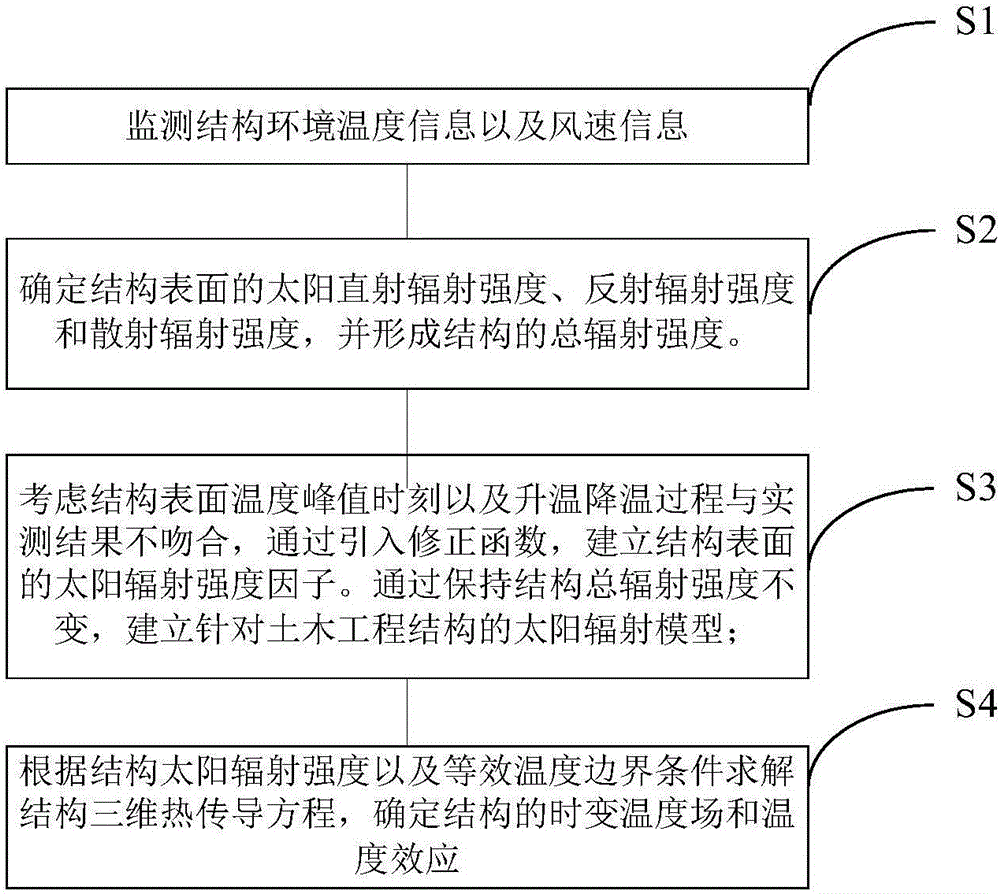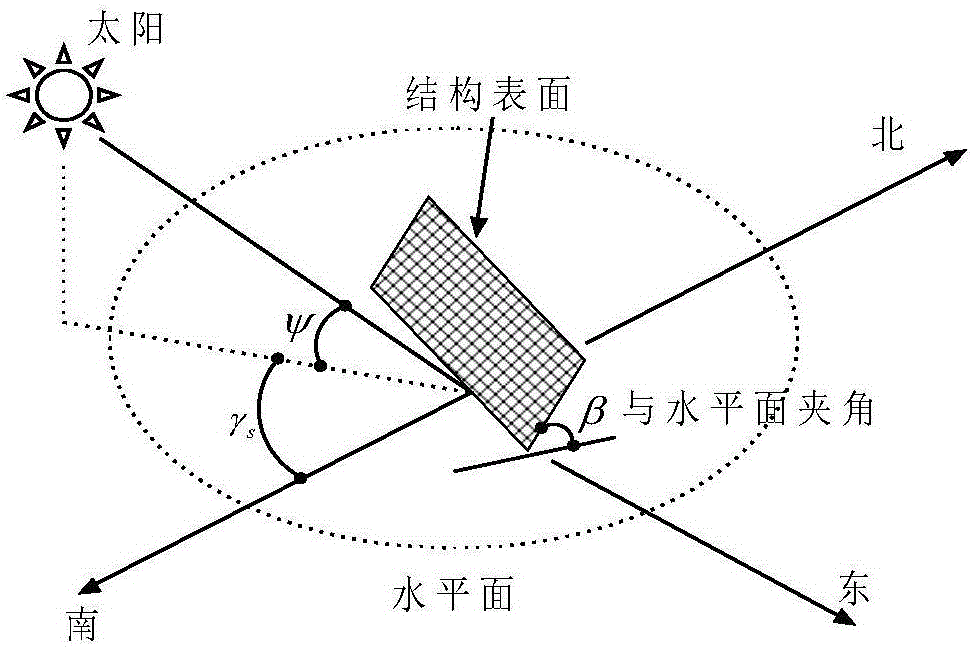Solar radiation temperature effect analysis method and system of civil engineering structure
A technology of civil engineering structure and solar radiation intensity, which is applied in the testing, measuring devices, instruments, etc. of machine/structural components. Applicability, analysis fast and effective results
- Summary
- Abstract
- Description
- Claims
- Application Information
AI Technical Summary
Problems solved by technology
Method used
Image
Examples
Embodiment Construction
[0057] In order to make the object, technical solution and advantages of the present invention more clear, the present invention will be further described in detail below in conjunction with the examples. It should be understood that the specific embodiments described here are only used to explain the present invention, not to limit the present invention.
[0058] This implementation first determines the geographic longitude and latitude of where the structure is located. A sensor device is further used to measure the ambient air temperature and surface wind speed where the structure is located. The direct radiation intensity, scattering intensity and reflection intensity of the structure are determined based on the proposed structural solar radiation model. According to the solar radiation intensity acting on the surface of the civil structure obtained from the analysis, temperature boundary conditions are established, and the 3D heat conduction equation of the structure is ...
PUM
 Login to View More
Login to View More Abstract
Description
Claims
Application Information
 Login to View More
Login to View More - R&D
- Intellectual Property
- Life Sciences
- Materials
- Tech Scout
- Unparalleled Data Quality
- Higher Quality Content
- 60% Fewer Hallucinations
Browse by: Latest US Patents, China's latest patents, Technical Efficacy Thesaurus, Application Domain, Technology Topic, Popular Technical Reports.
© 2025 PatSnap. All rights reserved.Legal|Privacy policy|Modern Slavery Act Transparency Statement|Sitemap|About US| Contact US: help@patsnap.com



